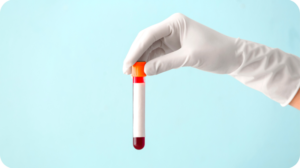Light affects health. Consider the ultraviolet light that bombards earth as part of sunlight, and the grave impact it can have on skin health. Of course, the effect can also be positive, as it is with Seasonal Affective Disorder lightbulbs and fixtures. Those can reverse the depression symptoms of individuals who live in parts of the world where they experience virtually no sunlight at all for long stretches of time. It should be obvious that light can play a powerful role in wellness.

For more than half a century, medical experts, researchers, and others have investigated light’s potential to heal. The most promising advances has come in the form of red light therapy (RLT). Lumped under the umbrella term photobiomodulation (PBM), red light therapy is currently being used to treat and improve skin conditions and to treat other health issues.
Red light wavelengths, roughly between 620 and 750, are in the visible spectrum. When skin is exposed to red light photons, or particles, the light affects cell components right down to the mitochondria, spurring beneficial changes. Proponents say this process prompts healing. However, as with any other treatment, success relies on carefully controlled dosage and application variables.
Red Light Therapy Uses
The use of RLT and other forms of PBM are currently limited to a handful of conditions for which the treatments show the most promise. These include:
- Skin health. This is the primary focus of red light therapy. Given the large exposed area of our skin’s surface, and ease of treating skin, skin issues like acne are natural targets for the therapy. A 2013 study published in the journal Photomedicine and Laser Surgery found that RLT was a good complement and possible alternative to other, more invasive treatments for various skin conditions. RLT is currently used to treat acne, age lines such as crow’s feet, unwanted hair growth, and splotchy redness and discoloration. Exposure to red light is thought to promote immune response in skin cells, and to stimulate the body to produce skin-rejuvenating collagen.
- Injury rehabilitation. Although research is still fairly modest, a 2015 study found that light therapy used in conjunction with other established rehabilitation protocols sped college athlete recovery from injuries. Of particular interest to athletes is the possibility that RLT might speed up musculoskeletal injury healing, allowing the athlete to return to competition quicker than otherwise would have been possible.
- Wound healing. This is one of the most interesting areas of light therapy research. There is evidence that RLT may have anti-inflammatory effects that promotes and speeds skin healing and skin cell regeneration. This has tremendous potential benefits as a painless, low-tech way to treat burn victims, diabetic limb wounds and sores, and oral sores.
The potential applications of red light therapy and other forms of PBM need further research, but the treatments are low-risk and possibly high reward. Practitioners use both hand-held devices and red light therapy beds, similar to the beds used in tanning salons. Although you can purchase at-home devices and some salons offer red light therapy, it’s best to explore this treatment avenue with your medical professional. You can learn more about both red light therapy and PBM in general, on the PBM Foundation website.
Share some love if you like this post!







